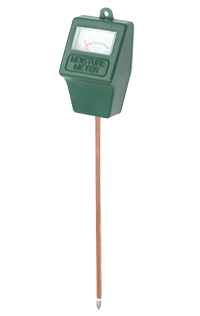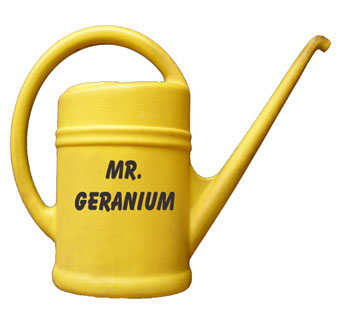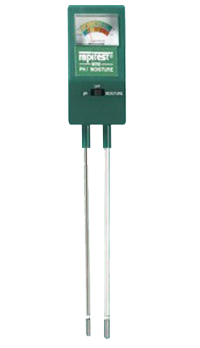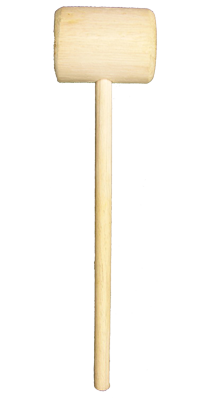The quickest way to kill a geranium is to over water it.
(you will see this message repeatedly on other pages)
IT IS THAT IMPORTANT!
 Moisture Meter
Moisture Meter  RULE # 1, Water only when the plant needs it. How can you tell ? Well, there a number of ways and I will explain a few and whatever method you choose you will gain more knowledge through experience. You will ‘kill’ a few plants in the process.
RULE # 1, Water only when the plant needs it. How can you tell ? Well, there a number of ways and I will explain a few and whatever method you choose you will gain more knowledge through experience. You will ‘kill’ a few plants in the process.
Scratch the near surface of the soil in the pot to Visually check for moisture.
 Moisture and PH Meter Is the plant already showing signs of wilting ?
Moisture and PH Meter Is the plant already showing signs of wilting ?
 Wood Mallet Use a moisture meter (probe), they sell for $4.95 and up.
Wood Mallet Use a moisture meter (probe), they sell for $4.95 and up.
Use a combination moisture and PH meter (twin probes) which sell from $ 9.95 and up.
Use a small wooden mallet if you have Terra Cotta pots. A ‘thud’ sound means they are still wet and a ‘cling’ sound means they are dry. This takes some time to develop the skill but once you have it is a very accurate gauge. Be careful not to hit the pot too hard. After you have broken a few pots you will become a master pot “thumper”.
Water PH
While we are discussing watering we should also address the PH (acidity and alkalinity) requirements for geraniums.
The PH range from 6.0 to 6.5 is optimum for geraniums in our climate zone.
It is wise to check the PH of your water supply and ‘City’ water is usually between 6.7 and 7.0. Check the PH of your soil mix too.
You may have a situation where your PH is above or below the desired level and you should add the proper chemicals to resolve the problem. I am not going to teach you all of this on our web site only to say that there is plenty of information elsewhere on the internet to help you. The obvious way of detecting problems is with your plant, if it is happy and blooming well there is probably no issue to be resolved. In this case let your plant be the canary, when it starts to shows some level of stress start checking for the reason.
Does your soil become dry and when you water does the water run through the pot but does not saturate the potting mix?
Over time salts build up in the soil and prevent water from wetting the mix. Terra Cotta pots are more prone to this and the salts will form a white film on the surface as a visual indicator. This is all remedied with the application of a surfactant which will remove the salts and allow the wetting properties to function once more.
A simple way of doing this is to make your own surfactant by adding 1/3 teaspoon of Ivory liquid dishwasher detergent to one gallon of room temperature water and thoroughly watering the plant. Magic!
